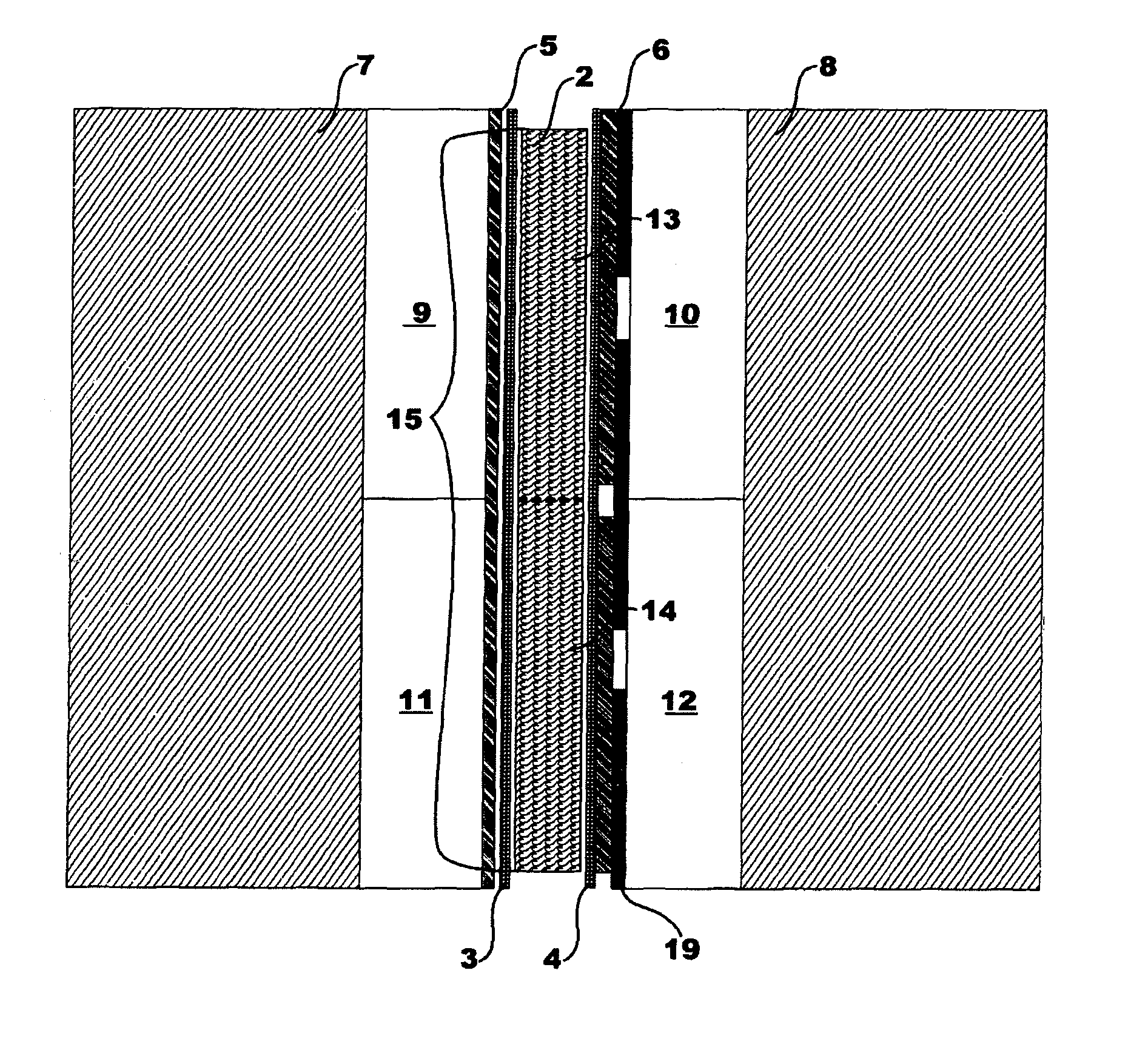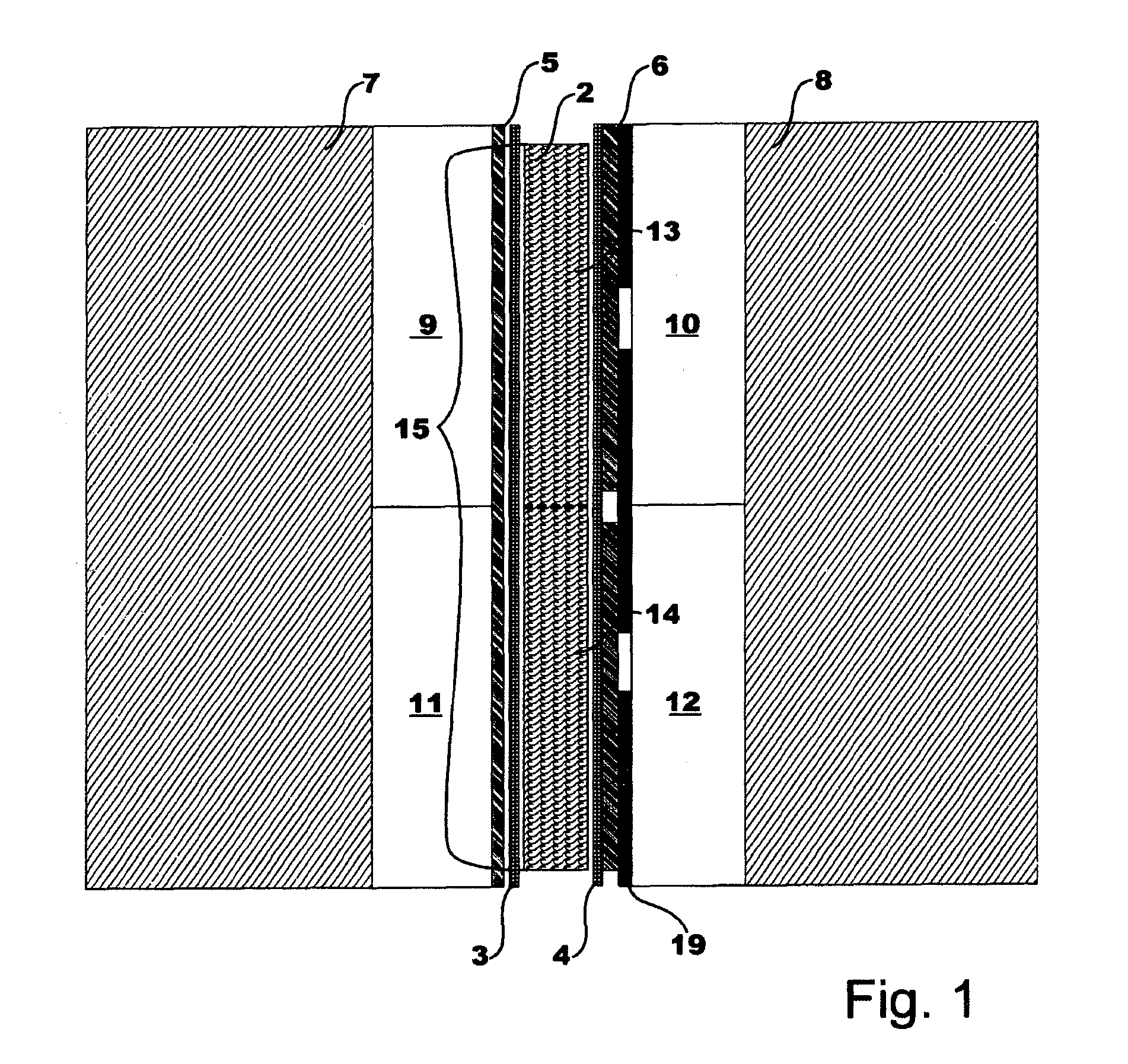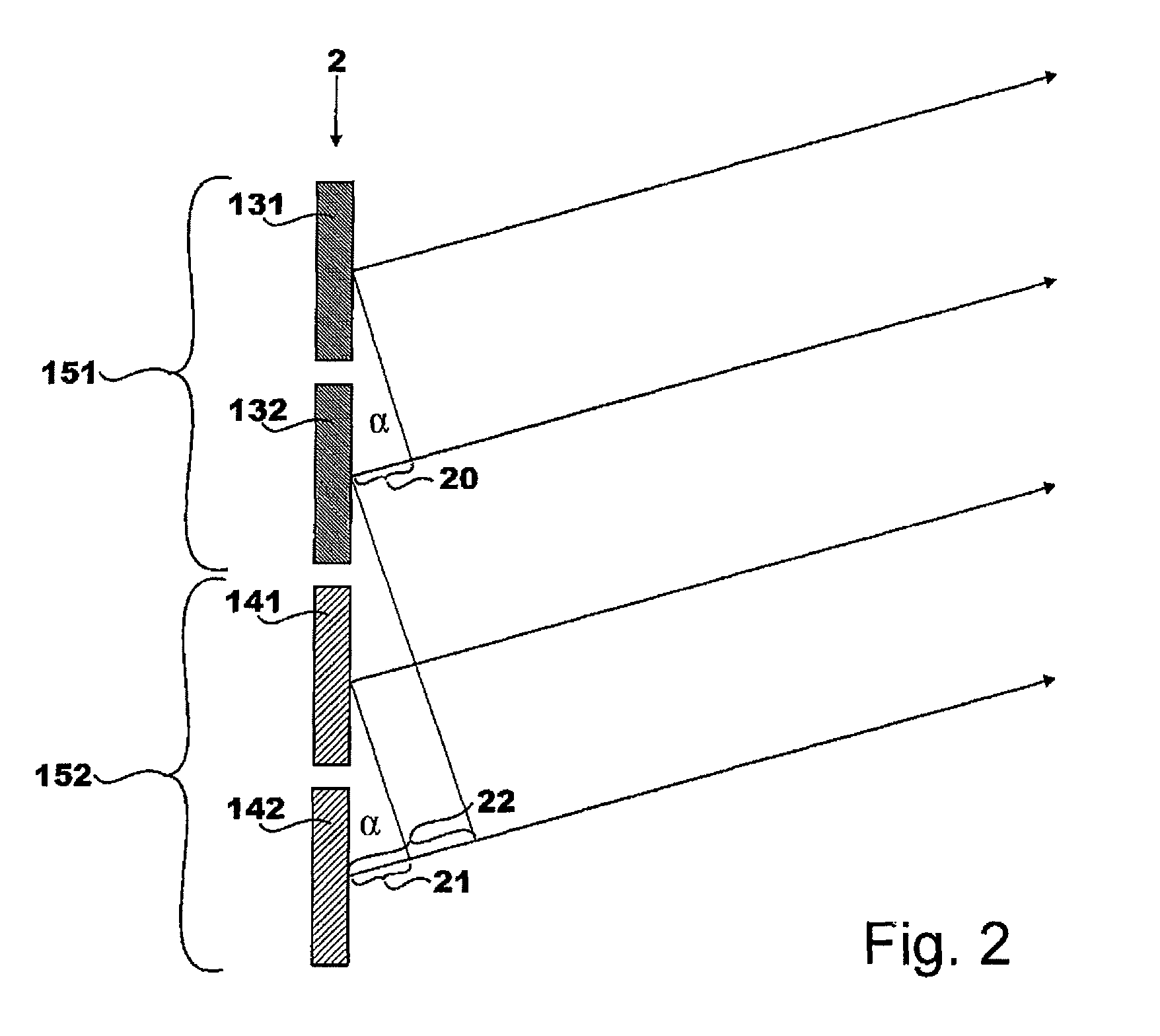Light modulator for representing complex-valued data
a technology of complex value and light modulator, applied in the field of light modulator for representing complex value information, can solve the problems of complicated encoding methods, difficult adjustment, irrelevant disadvantages, etc., and achieve the effect of widening the range of angle-specific optical retardation among adjacent pixels or pixel groups
- Summary
- Abstract
- Description
- Claims
- Application Information
AI Technical Summary
Benefits of technology
Problems solved by technology
Method used
Image
Examples
Embodiment Construction
[0068]FIG. 1 shows schematically a light modulator 1 according to this invention, comprising:[0069]A liquid crystal layer 2,[0070]An orientation layer 3, 4 which is disposed on the two sides of the liquid crystal layer 2,[0071]An electrode layer 5, 6 which is disposed on the two free sides, and[0072]A glass plate 7, 8 which is disposed on the two free sides,
Thus providing a two-dimensional arrangement of pixels 13, 14, whose transmissive amplitude or phase can be controlled with the help of potentials which are supplied to the electrode layers 5, 6.
[0073]According to the present invention, a structured retardation layer 9, 10, 11, 12 is disposed at least between one of the electrode layers 5, 6 and the glass plate 7, 8 which lies opposite the electrode layer 5, 6, said structured retardation layer causing an angle-specific change in the optical path length of an incident bundle of rays having linear polarisation, where the thickness of the retardation layer 9, 10, 11, 12 is dimensio...
PUM
 Login to View More
Login to View More Abstract
Description
Claims
Application Information
 Login to View More
Login to View More - R&D
- Intellectual Property
- Life Sciences
- Materials
- Tech Scout
- Unparalleled Data Quality
- Higher Quality Content
- 60% Fewer Hallucinations
Browse by: Latest US Patents, China's latest patents, Technical Efficacy Thesaurus, Application Domain, Technology Topic, Popular Technical Reports.
© 2025 PatSnap. All rights reserved.Legal|Privacy policy|Modern Slavery Act Transparency Statement|Sitemap|About US| Contact US: help@patsnap.com



